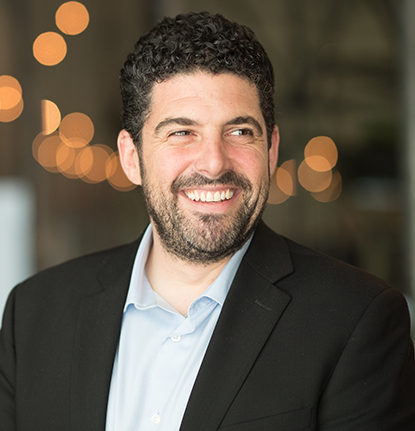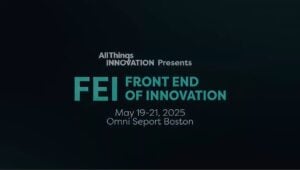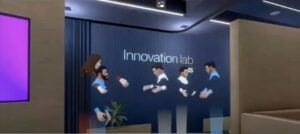In Part 1, we focused on the concept of transformational innovation and covered many angles of the theme, such as people-centricity, technology, and disruption. In Part 2, we asked, how might design thinking play into this scenario? Here in Part 3, we look beyond technology, and ask how might creating the right culture play into the process? Then, at its foundation, how might the process itself make transformational innovation go?
All Things Innovation would like to thank the participants: Leslie Shannon, Head of Trend & Innovation Scouting, Nokia; Milan Ivosevic, VP R&D, CooperSurgical; Prapti Jha, T.H. Chan School of Public Health, Harvard University; Sudha Ranganathan, Director Marketing & Talent Solutions, LinkedIn; Harsh Wardhan, Innovation Program Lead, Google; Nevada Sanchez, Co-Founder & VP, Core Tech. Eng., Butterfly Network, Inc.; Oscar Barranco Liebana, Innovation Director, FIFA World Cup 2022; Angelina Carvajal, Strategy & Innovation Partner, Sr. Dir. (Optum Advisory), UnitedHealth Group; and Cherie Leonard, Director of NA Insights, Colgate-Palmolive.
Transforming the Theater
Sudha Ranganathan notes, “Earlier when we were discussing our pet peeves, this is before the recording started, you spoke about something that really resonated today. It was the term ‘innovation theater.’ And I feel like it touches upon what you’re getting at right now, which is, it’s easy to talk about how to generate great ideas. What’s really hard is embedding that into the DNA of an organization, and then creating commercialization out of it so that at least a few ideas see the light of day. I feel like that ‘innovation theater’ is such a brilliant phrase to encapsulate how hard process is.”
Cherie Leonard says, “What struck me about the innovation theater was the matrix. And they looked at the growth potential and then the– it was business model driven really. And I think even sometimes the most disruptive ideas, we fall back on the business models that we know. And they talked about, I think, how that turns into innovation theater, because you’re going through the process and you have the incubation and everything, but then what’s actually scaled is in line with an existing comfortable business model. So, you kill all the big disruptive ideas. And I feel like that’s such a tremendous risk.”
Can incentives play a role in moving beyond innovation theater at an organization? Ranganathan adds, “A lot of it boils down to something brought up earlier around incentives. If an organization is incentivized to reward things and measure them the conventional way using the original standard byline, then it’s really hard to reward any innovative ideas, because they’re not going to fulfill the same P&L requirements that a one-year out incremental idea we’ll deliver.”
Prapti Jha notes, “If I may, because we are talking about new terms and fun theater, so I’ll just add one more into the mix. Patrick Whitney, who’s a professor at Harvard, he has this term called ‘innovation suicide.’ I won’t go into all the 10 ways, but he says, ‘Innovation suicide, 10 ways organizations kill their own ideas.’ And one of the last one that he says, ‘Everyone wants innovation and transformation as long as it doesn’t require change.’ And that’s powerful, because I don’t want to change my process, I don’t want to change my culture mindset, but we want to be innovative.”
For Milan Ivosevic, the path to innovation is key. He says, “I’ll challenge you to find any single company on planet Earth, if you go and ask them, ‘Do you have any sort of innovation?’ ‘Oh yeah.’ Everybody, it’s so sexy and popular, you have to do something with innovation. But when you go from innovation, and if it doesn’t go all the way and it doesn’t become a product, then what’s the point?”
Leslie Shannon adds, “I recently heard a presentation from another company, another large Silicon Valley company, not mine, about their innovation culture. And one of the things they said that was key for success was making it part of the manager’s incentives for genuinely bringing innovative products to market. And they said that was it. Now, because it’s not my company, I don’t know if it’s actually working or not, but that to me actually sounds like a pretty good idea.”
Diving into Process
So can an organization at least strive tooperationalize their transformational innovation? What else can be done honestly at both large and small organizations where we can at least begin the process of operationalizing this true transformation, which we know needs to happen?
Harsh Wardhan says, “When I heard the term innovation theater, I thought you were talking about theatrics that people put around process to make a lot of money, which is a good business. Now let’s think about the process that is deployed in the companies, or organizations, or the lack thereof. Some people talk about white space ideation, brainstorming, ‘Let’s come together, let’s think about the next great idea over coffee and a lot of sugar.’ That’s the lack of process.”
Wardhan continues, “The other one is, ‘I know this process works. This is the design thinking. I’m going to be following it to a T and disrupt the industry.’ That doesn’t work either. The first one doesn’t work, because it’s a lot of white space thinking, a lot of ideas in the sky, the rubber doesn’t meet the road. This one, we get bogged down in analysis paralysis as we call it. We think too much about process, we cut everything down. It’s a mess. That rubber doesn’t meet the road there either. So, what do we need to do to operationalize transformational innovation is to enable our people to work with flexible processes. It is not only one way that you can do it. Yes, you can use this process, but be flexible to change it down the road.”
Flexibility could be a key process of transformational innovation, agrees Ivosevic. “You inspired me to think about the way I see this. We are talking about process. Process is almost kind of prescribed way of doing things. That somehow doesn’t fit with the free nature of free spirit innovations. On the other side, the extreme is having nothing. So, I believe that kind of concepts and frameworks that kind of provide general guide rails are kind of directing you but don’t go too far into process, because now you start prescribing the way to think about it.”
Wardhan adds, “I like to think about process as alphabets. Not all words are the same. We use processes, frameworks or methodologies. You use different alphabets to make words and sentences. That’s how you make process with frameworks and methodologies. I think that’s a good way to think about it.”
One factor about process, it’s important to break the silos as much as possible to enhance the collective intelligence of the venture.
Oscar Barranco Liebana makes his own observation about the process and the intelligence learned collectively: “One important thing that we learned from the interaction of so many different stakeholders is that each organization has their own agenda, their own processes, and their own way of thinking. So, what we learned is that if we can maximize the collective intelligence from different stakeholders, we were improving the intelligence for innovation. And that means that we are breaking the silos, we’re breaking the processes, and the collective intelligence of the ‘super mind,’ what we call different stakeholders from different perspectives. If you are, for example, addressing the different value dimensions, if you are involving the implementers of the solutions, and you have a very strong antagonist that they are creating friction and conflict, we are creating an environment where with this friction and interaction, you are improving and raising the intelligence for innovation. And, I think, this is something very important, because it doesn’t depend on one single organization. You are creating intelligence and distributed through many.”
Transformation, and its variety of processes, the panelists seem to agree, takes a lot of collaboration—and time.
Angelina Caravajal says, “I think we’re using innovation and transformation to mean the same thing, but in fact they’re very different. And so, not for me to define it, but let’s say transformation innovation, now that we are talking about it, let’s say we know what we mean by innovation, product, business model, service, experience, whatever. Once you have that, then you need to transform something. You may need to transform your own organization, your culture, build new revenue streams, create new connections, create new customers, new ways of working. That’s something very deliberate. And that takes time. As much as innovation, filling that innovation pipeline, bringing innovation to market takes time, transforming your organization, transforming the market to adopt your awesome innovation takes a lot of effort. Those are different concepts, right? And they require different skills that require a lot of collaboration, a lot of trust.”
Click here for the full All Things Innovation FEI Roundtable on transformational innovation.
Contributor
-

Seth Adler heads up All Things Insights & All Things Innovation. He has spent his career bringing people together around content. He has a dynamic background producing events, podcasts, video, and the written word.
View all posts



























































































































































































